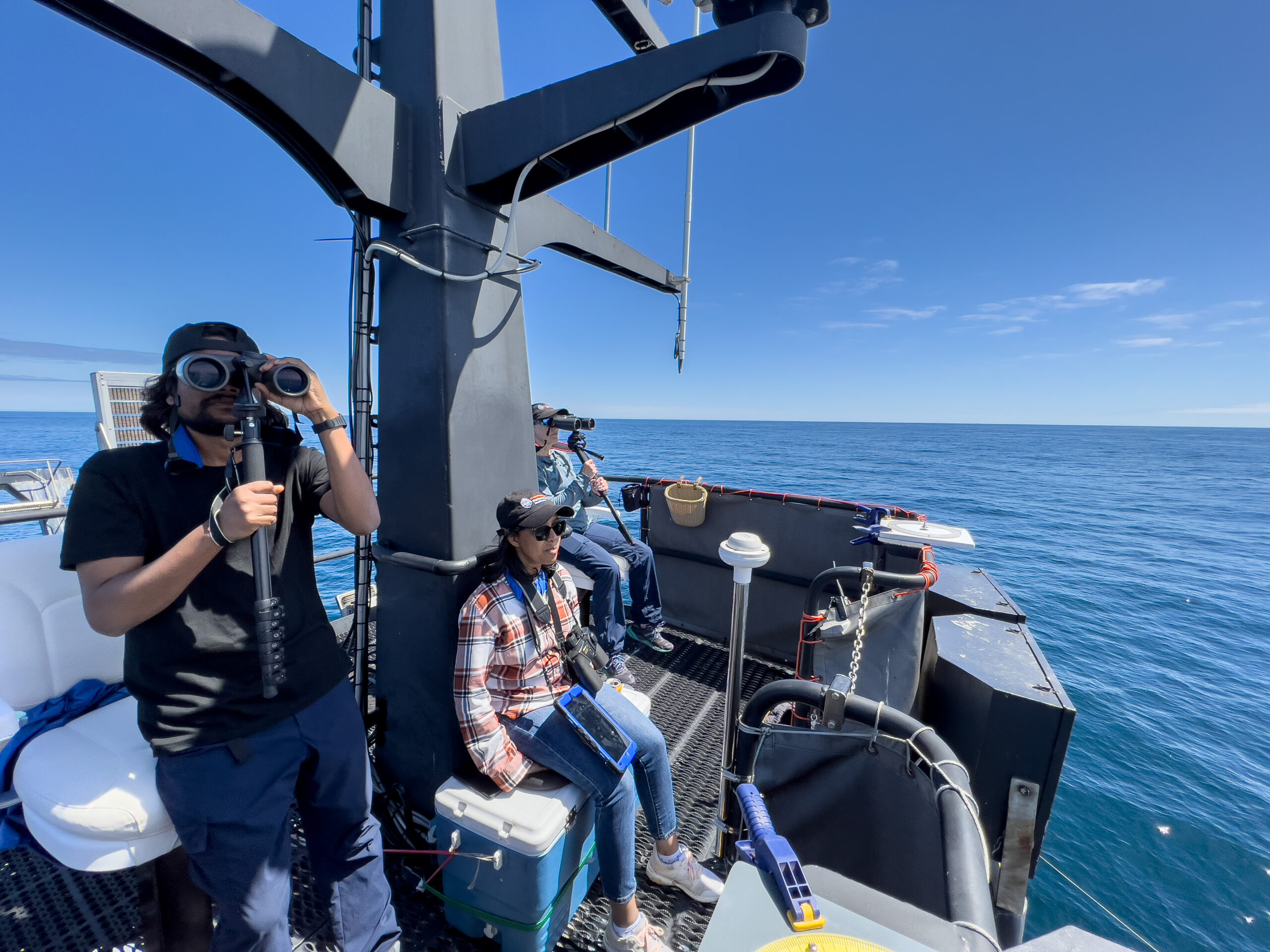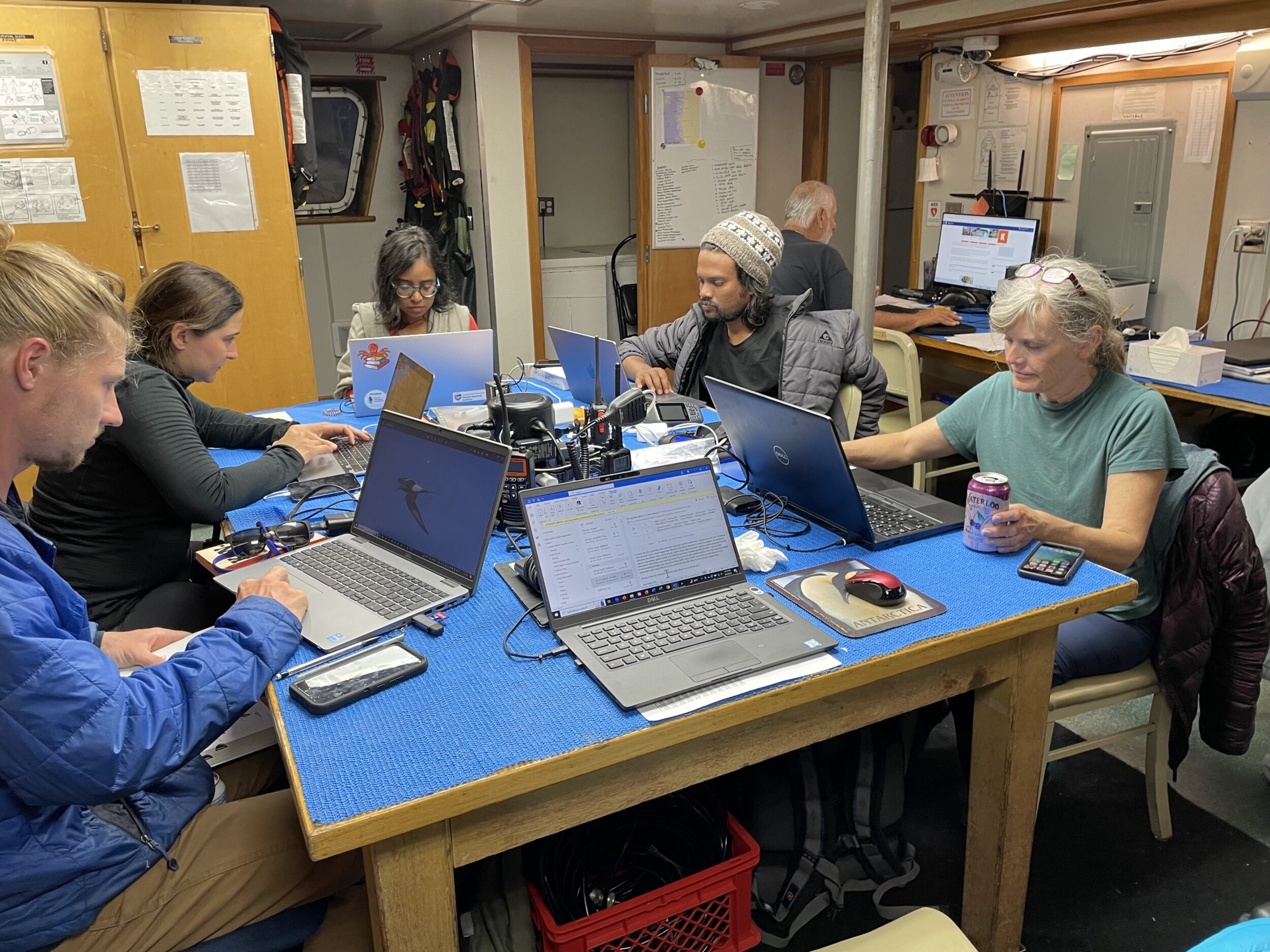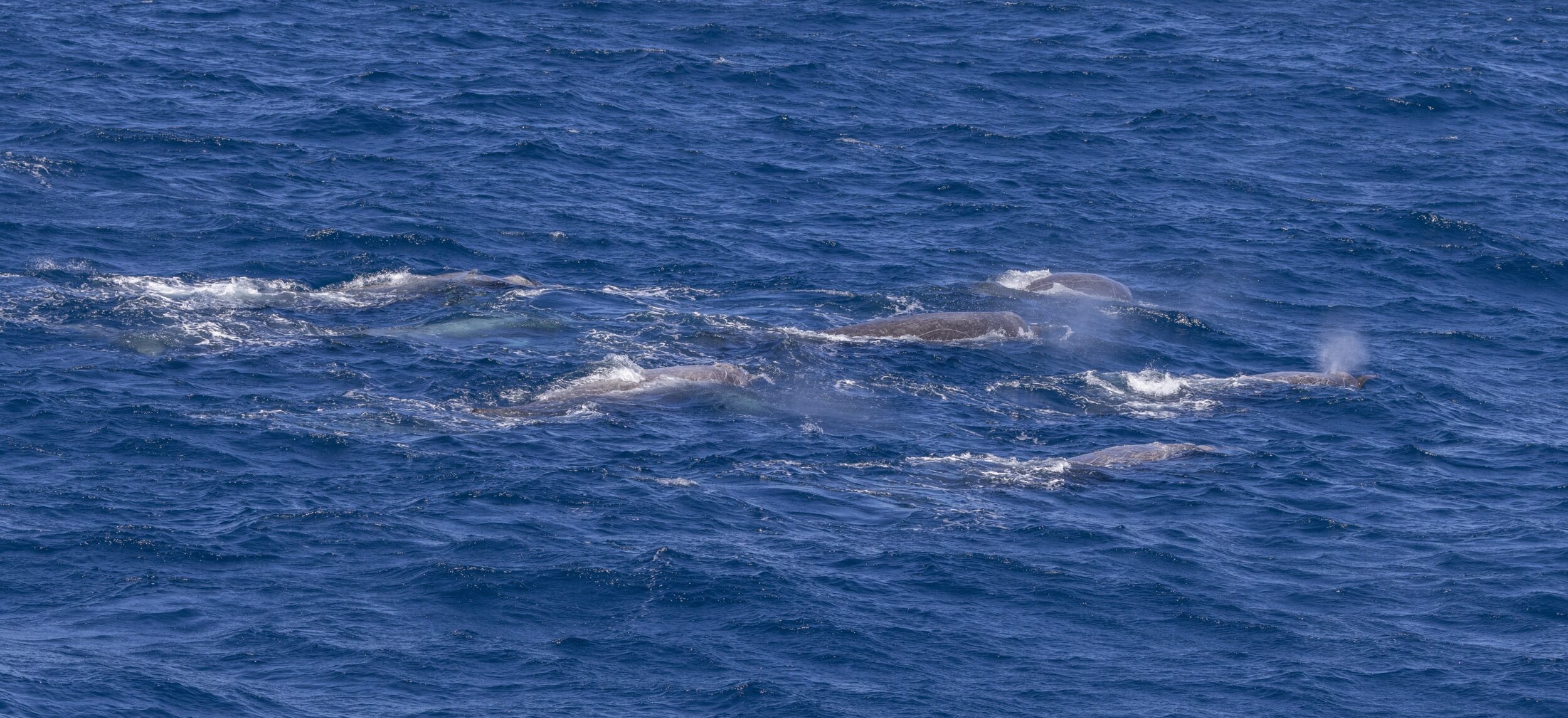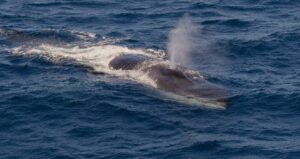
By DANA TIMS/YachatsNews
For Lisa Ballance and her Oregon State University colleagues, it’s two years down and two to go in their ambitious effort to help federal regulators figure out where to most safely and effectively place huge offshore wind turbines off the wind-rich Oregon and California coasts.
Ballance’s team has wrapped up the sixth and final visual survey aboard the R/V Pacific Storm, an 84-foot-long vessel outfitted for year-round ocean research.
Now, the bulk of their work will be taking the extensive data collected at sea and transforming it into highly detailed maps showing where myriad species are at what point in the year, and how they can be least effected by wind platforms intended to supply a clean new energy source.

“The goal of this project is to provide baseline data on marine mammals and seabirds,” said Ballance, director of OSU’s Marine Mammal Institute in Newport. “What know quite a lot about what’s out there, but we don’t know enough in fine resolution and temporal scales,” she added, referring to scales used to measure the change in a variable over time.
Ultimately, the maps will show predicted species occurrence patterns, indicating where and when different mammal and seabird species will show up under different environmental conditions.
The $2 million, federally funded project works under the acronym MOSAIC – Marine Offshore Species Assessments to Inform Clean energy.

The study area extends from Cape Mendocino in California north to the Columbia River, and includes marine waters over the continental shelf and across the shelf’s slope.
Information fed into the maps will include everything from acoustic data acoustic data compiled by the R/V Pacific Storm and other research vessels, existing ocean-bottom-acoustic devices and even small boats deploying satellite tags onto blue whales to help better understand their migrating patterns.
So far, the project’s data collections have documented 16 cetacean species – an order that comprises species of whales, dolphins and porpoises – and 64 seabird species.
When considering the project as a whole, Ballance said, it’s important to note that the study area is not necessarily based on where floating offshore wind platforms should be sited. Instead, it is based on which areas are most important to marine mammals and seabirds.
Companies interested in investing in wind-energy efforts off the West Coast can then take those maps and use them as an aid in figuring out which areas would be least intrusive to ocean-going birds and animals.

A day on the Pacific Storm
The work it took for the seven scientists aboard the vessel on any given expedition is daunting, to say the least.
The crew rises an hour before sunrise, has breakfast and quickly runs over the day’s mission.
At sunrise, three marine mammal researchers take their posts in the “crow’s nest,” which stands 30 feet above the waves. Binoculars cupped to their eyes, they sweep back and forth in search of whales and other mammals. The third researcher uses a laptop computer to record actual sightings.
Just below them, atop the ship’s bridge, two researchers take shifts scanning the horizon for seabirds.
In all, the work goes on for the 14 or 15 hours of expected summer daylight. Then, before bedtime, the crew reassembles below deck to input the data collected that day, with a particularly keen eye on ensuring that input mistakes aren’t made that could gum up any final product.
“It can definitely be pretty grueling,” Ballance said. “Your eyes, in particular, get quite a workout. Then, once any biopsy samples are processed and all field notes are collected, it’s about time to get up and do it all over again.”

Heading into the wind
Project MOSAIC is just one piece of the Biden administration’s plans to develop large-scale wind farms along nearly the entire coastline of the United States.
That larger effort, which includes plans to lease federal waters in the Gulf of Mexico, Gulf of Maine and off the coasts of the Mid-Atlantic states, as well as Oregon and California, is regarded as the first long-term strategy from the government to produce electricity from offshore turbines.

The federal Department of the Interior’s approval of the Atlantic Shores South offshore wind energy project brings to nine the number of commercial-scale wind energy projects under the Biden administration, according to a recent government news release. That amounts to a total of 13 gigawatts of wind energy – enough to power nearly five million homes.
Throughout the first two years of Project MOSAIC’s research work, Ballance said she has remained very aware that some fishing and crabbing interests have serious questions about how floating offshore wind platforms could affect their respective businesses.
“That this is a very polarizing issue is not lost on me,” she said. “But I’m hopeful that the science we are producing will help provide fact-based information to inform that debate.”
The larger question underlying all future discussions focuses on how humans use the ocean and how that might conflict with marine mammals and their ecosystems, Ballance said.
“I will say that this kind of science is exactly what the Marine Mammal Institute is known for,” she said. “This is science that has real-world impacts and which is at the center of polarizing issues. I’m confident that this will help create more sustainable uses of the ocean and minimize impacts on these fragile ecosystems.
“And that’s exactly where I want us to be.”
- Dana Tims is an Oregon freelance writer who contributes regularly to YachatsNews.com. He can be reached at DanaTims24@gmail.com




The study is looking at marine mammals and seabirds. So is anyone looking at fish and crabs, which are the concerns of fishers and crabbers?
Huge floating wind farms? I’m no expert but I would think these would have a big effect on the ecosystems they are floating in.
Any and all areas of our oceans are important to marine life, below and above. Trying to select sites that are “least intrusive” is useless, you’re intruding and it means something even if you think you won’t be harming as many creatures in one area as you would in another. And of course, ocean wind farms won’t stop.at a few if they produce even a fraction of what is expected.
There’s serious problems with wind energy. Hope the state takes a look at this video:
https://www.youtube.com/watch?v=LklUVkMPl8g
The environmental costs in mining, manufacturing, failures at sea, and complexities of integrating with the power grid have not been adequately studied. The project looks like it’s a done deal because it’s ideologically driven, with science lacking in complete thoroughness. The project seems to be in search of “mitigation” excuses, so that a few companies can do what corporations always do – make money on whatever they want, with government backing, while those who depend upon the sea for a livelihood suffer the consequences, including the bird and marine life which will be subjected to an expensive experiment at the likely cost of their lives.
Agree. Probably one reason why there seems to be plans to auction off rights before the study is completed.
As with any study, the value is in the questions being researched. While migratory patterns are crucial data toward reducing harm to ocean life, the measure of off-shore wind farms must also include real-life data from existing wind farms and their impact, not from a theoretical basis, but from an actual baseline. The questions asked by corporate-captured federal agencies are protective ultimately to profit-driven projects more than they are to the objects of their study.
These scientists from OSU are good, no doubt, and the results of their research will hopefully help to mitigate harmful impacts of off shore wind turbines, but given the disgraceful track record of off shore wind projects off the eastern seaboard and the destruction to mammalian sea life they have caused, more information about direct impacts is called for.